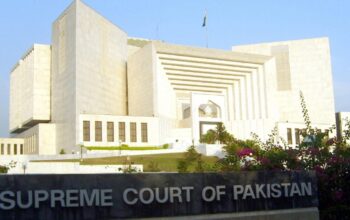By Staff Reporter
ISLAMABAD: Power crisis-hit Pakistan, where the sun shines in all its glory most of the year, has planned to make the most of solar energy to overcome its chronic energy crisis, the Independent Pakistan (IP) learned on Thursday.
“The decision has been taken to move heavily into solar energy, on-grid, mini/micro off-grid, transport, government offices, and agriculture,” said former prime minister Shahid Khaqan Abbasi chatting with the IP after attending a high-level discussion on renewable energy.
“The modalities and policy for this initiative are being finalised in Thursday’s meeting of the Task Force on Solar Energy Initiatives.”
“The meeting has initially planned for shifting the government offices to solar energy, which will be finalised in a week’s time,” the ministry of energy posted on its Twitter handle.
As highlighted in a report just published by the World Bank – “Variable Renewable Energy Competitive Bidding Study” – competitive bidding, whereby the government contracts for new power supplies through a reverse auction process based on the tariffs offered by different private sector developers, must start in 2022 to meet the requirements of the government’s Indicative Generation Capacity Expansion Plan 2021-2030.
This envisages 2 Gigawatts of additional solar and wind capacity coming online from 2024 onwards, with further additions in subsequent years.
A previous analysis published by the World Bank suggests that the IGCEP 2021-2030 targets are not ambitious enough, with scope for a more aggressive expansion of variable renewable energy. Considering the heavy reliance on expensive fossil fuels – which have dramatically increased in cost over the last few months – Pakistan would be saving money right now if it had been more ambitious in the past, even allowing for capacity payments.
As highlighted by the recent installation of 20 MW of rooftop solar on over 30 hospitals in Sindh under a World Bank financed project, rooftop solar can be delivered quickly (in 6-12 months) and at relatively low cost (as low as $530 per installed kilowatt of capacity, although costs have risen more recently), while avoiding the need for additional transmission and distribution infrastructure.
Many businesses and households are getting in on the game due to high electricity prices and net metering arrangements, but it is now important to consider how this market can be made sustainable in the long run, for both consumers and for electricity distribution companies.
Copyright © 2021 Independent Pakistan | All rights reserved




